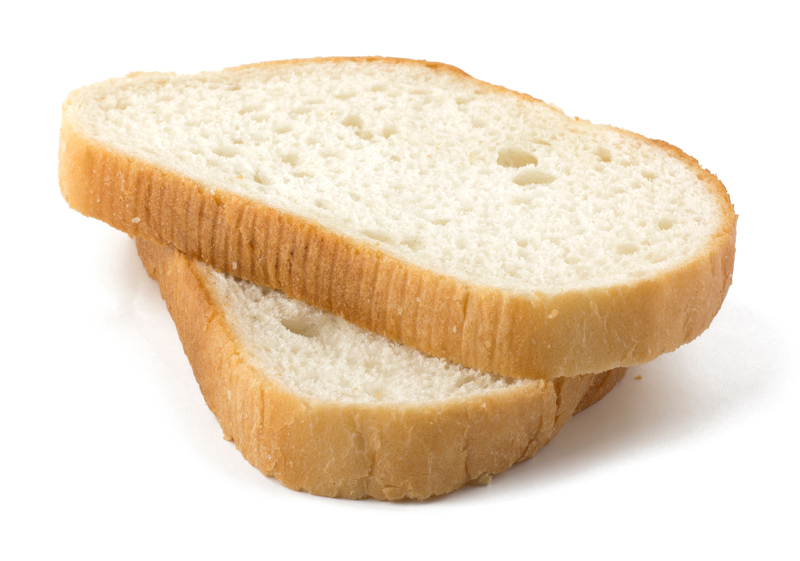Fresh and Clean: Your Go-To Guide for Enamel Oven Tray Care
Posted on 03/07/2025
Fresh and Clean: Your Go-To Guide for Enamel Oven Tray Care
Are you tired of scrubbing stubborn stains off your oven trays and dreaming of that like-new shine? Keeping enamel oven trays clean not only improves the appearance of your bakeware but also ensures better-tasting meals and a healthier kitchen. Welcome to your go-to guide for enamel oven tray care -- a comprehensive resource for tips, tricks, and step-by-step instructions to keep your enamel trays fresh and clean every time.
What is an Enamel Oven Tray?
Enamel oven trays, often referred to as enamel-coated baking trays, are metal trays coated with a layer of vitreous enamel. This hard, glossy coating is both durable and resistant to acidic or alkaline foods, making these trays a popular choice for both home cooks and professional bakers.
- Durability: Enamel trays withstand high heat and resist chipping and scratching when used properly.
- Non-reactive Surface: Their non-porous, non-reactive finish prevents metallic taste transfer and is safe for all types of foods.
- Easy Maintenance: With regular care, enamel trays maintain their shine and performance for years.

Why Proper Enamel Tray Care Matters
Taking care of your enamel oven tray goes beyond just keeping up appearances. Proper maintenance:
- Prevents rust and damage to the enamel surface
- Extends the long-term lifespan of your tray
- Keeps food tasting pure and avoids contamination
- Saves money by reducing the need for frequent replacements
Let's dive into the specifics of enamel oven tray cleaning and care for sparkling results every time.
How to Clean Enamel Oven Trays: Step By Step
1. Preparing Your Tray for Cleaning
- Allow the tray to cool down completely before handling it. Sudden changes in temperature can cause enamel to crack.
- Remove any loose crumbs or burnt-on food by gently wiping or using a soft brush.
2. Everyday Cleaning Method
For regular post-cooking maintenance, follow this easy, enamel-safe cleaning routine:
- Soak your tray: Fill your sink with warm, soapy water and immerse your oven tray for at least 10-15 minutes. This loosens minor food residue and fat splatters.
- Use a soft sponge or cloth: Gently wipe away residue. Do not use steel wool or abrasive pads, as they may scratch the enamel coating.
- Rinse thoroughly with warm water to remove soap suds.
- Dry Immediately: Use a soft, clean towel to prevent water spots and rust on exposed metal edges.
3. Deep Cleaning for Stubborn Stains and Baked-On Grease
If regular washing isn't enough, it's time for a deep clean:
- Baking Soda Paste: Mix 1/4 cup baking soda with enough water to form a paste. Spread this over tough stains and let it sit for 30-60 minutes.
- Gently scrub with a non-scratch sponge in circular motions. Most grime should lift off easily.
- White Vinegar Splash: For extreme build-up, pour a little white vinegar on the stained spots. It will fizz on contact with baking soda, releasing residues naturally.
- Wash and dry as in the everyday cleaning method.
4. Removing Discoloration and Persistent Odors
- Lemon Juice Bath: Fill the tray with hot water and squeeze in the juice of one lemon. Let it soak for one hour to dissolve odors and brighten the enamel.
- Baking soda sprinkles: For lingering smells, sprinkle a thin layer of baking soda and leave overnight. Rinse off in the morning.
5. Dealing with Burnt-On Food
- Soak the tray in boiling hot water (use caution) with a few tablespoons of baking soda mixed in. Let it sit for several hours or overnight.
- Use a wooden spatula or spoon to gently lift the softened residue -- never use metal tools!
- Repeat cleaning process as needed.
What NOT to Do When Cleaning Enamel Oven Trays
Protecting your enamel oven trays is as much about what to avoid, as it is about good cleaning techniques. Always steer clear of:
- Harsh chemical cleaners such as oven sprays, bleach, or ammonia -- these may damage the enamel surface and cause discoloration or pitting.
- Metal scouring pads or abrasive brushes that can scratch and chip the coating.
- Soaking for excessive periods if your tray has exposed metal edges. This could lead to rusting.
- Sudden drastic temperature changes (thermal shock), e.g., plunging a hot tray into cold water.
How to Prevent Stains and Build-up on Enamel Oven Trays
Proactive care is the best way to keep your oven trays fresh and clean. Here's how to minimize the risk of stubborn marks:
- Line your tray with baking paper or a silicone mat before cooking messy foods or sweet bakes.
- Wipe down after every use, even if it looks "clean enough."
- Avoid overheating beyond recommended temperature ranges for your tray.
- Store in a dry, well-ventilated cupboard to prevent moisture build-up and rust.
Quick Tips for Daily Enamel Oven Tray Maintenance
- Rinse right after use to keep residue from drying and toughening up.
- Never stack wet trays; ensure each is bone dry before nesting.
- Invest in a tray rack for air circulation and easier storage.
Frequently Asked Questions: Enamel Oven Tray Care
Can I Put Enamel Oven Trays in the Dishwasher?
While most enamel trays are technically dishwasher-safe, hand washing is preferred for long-lasting shine. Harsh dishwasher detergents and high-pressure sprays may dull the finish or wear down exposed edges. Always check your manufacturer's guidelines.
How Do I Remove Black Marks or Scratches?
Light black scuff marks from utensils may usually be buffed out with a mild baking soda paste and a soft sponge. Never use abrasive powders or metal polish, as they may worsen scratches. Deep scratches exposing metal are irreparable -- avoid using chipped trays to prevent rust and contamination.
Is It Safe to Use Damaged or Chipped Enamel Trays?
It's not recommended to use trays with significant chips -- the metal beneath may rust and small enamel fragments could end up in your food. For minor chips, use the tray for non-food tasks (like craft projects) instead.
Can I Use Metal Utensils on an Enamel Tray?
No. Stick to wooden, silicone, or plastic utensils. Metal tools can scratch and chip the enamel, diminishing the tray's non-stick and protective properties.
What About Baking Soda and Vinegar -- Are They Safe?
Yes, baking soda and vinegar are gentle, natural cleaners safe for enamel. Use them in moderation and avoid letting vinegar sit too long, as its acidity may damage some finishes over extended periods.
How Often Should You Clean Enamel Oven Trays?
- After Every Use: Even a quick wipe down prevents future build-up.
- Deep Clean: Once a month or as needed, especially after roasting fatty meats or sugary bakes.
- Odor Freshening: Use the lemon or baking soda methods sparingly for freshness boosts.
When to Replace Your Enamel Oven Tray
Despite your best efforts, there comes a time when even the best-cared-for tray reaches retirement. Signs it's time for a new one:
- Significant chipping or flaking exposing underlying metal
- Corrosion spots that do not clean off with routine care
- Persistent odors or residue that linger no matter what you do
- Uneven heating or warping making food preparation difficult
If you love the fresh and clean look of enamel bakeware, investing in a replacement before it impacts food quality is worthwhile.

Eco-Friendly Enamel Tray Care
Looking for greener cleaning solutions? Enamel trays can be kept spotless with natural agents and minimal chemicals:
- Baking soda for cleaning and deodorizing.
- Lemon juice for stain lifting and freshening up.
- Vinegar for dissolving grease and mineral deposits.
- Biodegradable detergents] to prevent environmental impact.
Tip: Regular, gentle cleaning is both eco-friendly and tray-friendly.
Summing Up: The Ultimate Enamel Oven Tray Care Routine
- Cool and clear. Always let your enamel tray cool before handling or cleaning.
- Soak, don't scour. Use warm, soapy water and a soft sponge for daily cleaning.
- Tackle stains naturally with baking soda, vinegar, and lemon juice.
- Avoid harsh chemicals and metal utensils to keep your tray's glossy finish.
- Store dry, and avoid stacking wet trays to prevent rust or damage.
- Replace trays when chips or cracks appear for your safety and food quality.
By following these enamel oven tray care tips, you can keep your bakeware fresh, clean, and ready for any recipe. A little regular attention goes a long way toward maintaining that beautiful finish and ensuring every dish you cook tastes its very best.
For more oven tray cleaning tips, kitchen maintenance guides, and ways to make your kitchen sparkle, don't forget to bookmark this go-to resource. Happy baking!





